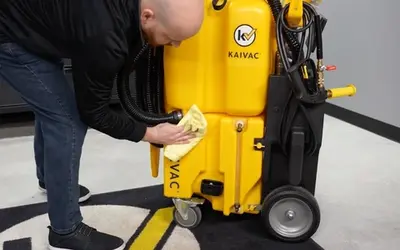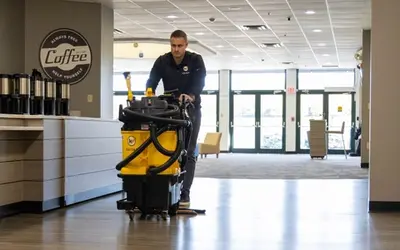Restaurant Cleaning to Prevent Pests

Nothing tarnishes a restaurant’s reputation faster than a pest problem. A single sighting is enough to send diners running to the door. And local news outlets love to report about health code violations or evidence of infestation. This makes cleaning to prevent pests one of the most important tasks for your crew.
Of course, restaurant operators often contract with a pest control service to keep bugs and rodents in check. And kitchen staff clean and sanitize every day. But using the wrong cleaning process can actually make a pest problem worse. Which then requires more costly visits from the exterminator.
A better cleaning process breaks this vicious cycle. Here’s how to stop throwing money and chemicals at the problem and start cleaning to prevent pests.
Know What Pests Want
Vermin like cockroaches, flies, and rodents visit restaurants for the same reason people do. They want, “water, food, harborage. Just like us, pests come to a restaurant looking for a place to get a drink, grab a bite to eat, and hang out for a while,” according to this article by Dr. Joel Grassi at BHB Pest Elimination.
Pests will find these things in places like overflowing trash bins, grimy dumpsters, soiled dishes and sinks, and dirty floor drains. But they also seek out less obvious places like missing or cracked floor tiles, damaged grout, and any pooled water. They also love soda fountain lines.
Best Cleaning Process to Prevent Pests
Removing sources of food, water, and shelter are the best way to prevent pest infestations. Unfortunately, common cleaning tools like brooms, mops, and deck brushes just can’t do the job. There are a couple of reasons why this process doesn’t work:
- Food fall: Bits of food fall to the floor and get kicked under benches and equipment all day long. Sweeping should remove these crumbs but only if workers are thorough and consistent. More likely busy kitchen staff do a quick sweep and end up pushing food further into the edges and corners.
- Pooling Water: Standing water harbors pathogens and attracts pests. Cracked or missing floor tiles provide great places for water to pool. But even if your floor is in perfect shape, nightly mopping leaves too much moisture behind. In fact, some pest experts recommend using a fan or dry mop to completely dry floors.
- Grease Buildup: Removing grease is one of the hardest, yet most important kitchen cleaning tasks. More than a slip-and-fall risk, greasy buildup attracts pests. Scrubbing with a deck brush pushes that grease deeper into grout lines creating tempting spots for vermin to gather.
Kaivac offers a better restaurant cleaning process that actually prevents pest problems. The UniVac® coupled with KaiPow Degreaser eliminates food fall, busts up grease, and leaves floors consistently clean and fully dry.
Workers start by dispensing cleaning solution from the tank. They then use the ergonomic speed spreader to spread and agitate the solution. Finally, the powerful wet vacuum sucks the greasy, grimy mess up. It even sucks grease and dirt up from porous grout. There’s no need to pre-sweep or dry mop, and the tool maneuvers under benches and equipment to catch and remove food fall.
The cleaning duo deliver other benefits too. KaiPow is a powerful degreaser that never harms grout. The cordless UniVac removes trip hazards. Plus, the technology works much faster than mopping so workers can move to other, high value pest prevention tasks, like cleaning soda fountain lines.
Stop throwing money and chemicals at pest prevention. Invest in a better cleaning process from the start with Kaivac.
Related Posts

Preventive Maintenance for Your No-Touch Cleaning® System
Your Kaivac No-Touch Cleaning system makes restroom maintenance fast and easy. Keeping your No-Touch Cleaning system in good working order is also fast and easy. Kaivac makes performing preventative maintenance and troubleshooting potential issues simple. No special equipment or technical expertise required.
Read more
A System for Every Aisle: How Kaivac Delivers Complete Grocery Store Cleaning Solutions
Kaivac’s integrated Grocery Suite streamlines cleaning across every store zone, cutting labor, reducing cross-contamination, and delivering faster, deeper hygiene results for safer, fresher stores.
Read more
How to Clean Worship Facility Floors
Worship facilities need clean, safe floors to best serve their congregations. Here’s how tools from Kaivac keep worship facilities clean from the entry to seating areas to kitchens and more.
Read more